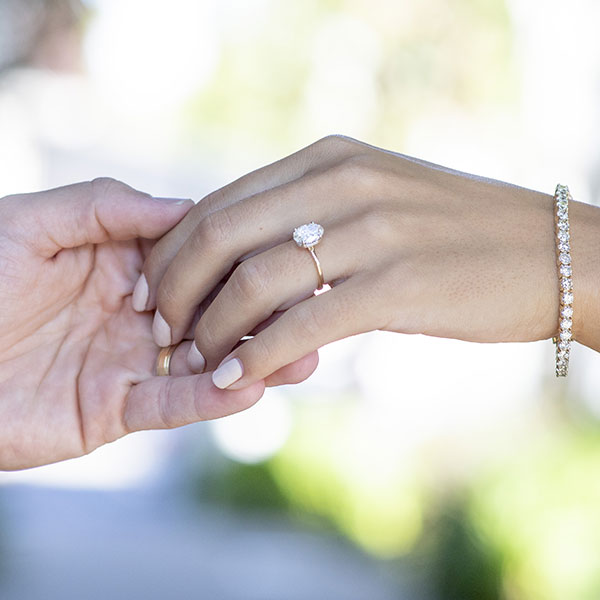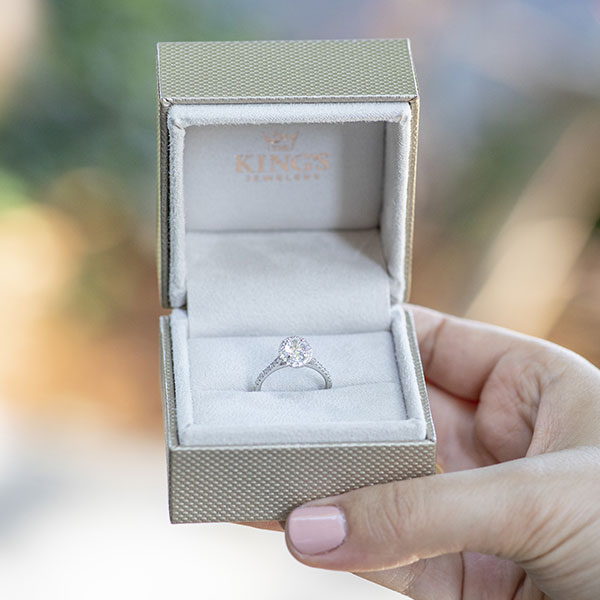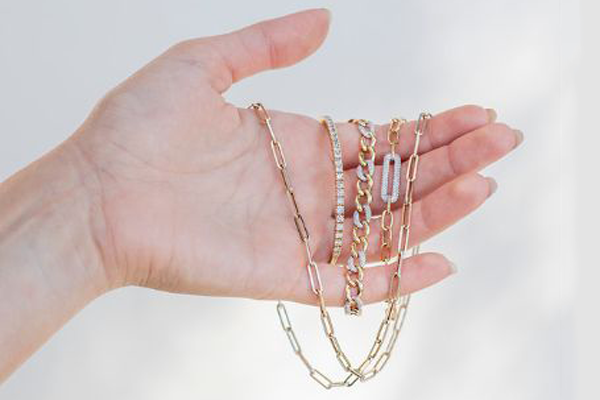- 925.938.1030
- 1655 N Main St, #106 Walnut Creek, CA 94596
-
Open Today 10:00am - 4:00pm
-

Open Today 10:00am - 4:00pm
We believe it is essential that your diamond purchase is based on complete information. Our experts go through rigorous diamond and gemological training so that we can guide you through the diamond buying process. Each diamond sold at The King's Jewelers is graded in our in-store diamond lab by our GIA-trained staff, including both natural and lab-grown diamonds with reputable lab reports from GIA and AGS. As our client, you trust us to provide honest and accurate diamond grades. We owe it to four generations of family to honor that trust with every diamond sale. Here are the key things that we evaluate in every diamond!

Diamond is well-known as the traditional choice for engagement rings, but many people wonder why they should choose diamond to mark their milestone occasions. Beyond tradition, there are many reasons diamond is the stand out choice for a forever gemstone.
Wearable: Diamond is ideal for daily wear because of its hardness—it can only be scratched by other diamonds. In fact, diamond is four times harder than sapphire, the next hardest gemstone, making it significantly more durable and the best choice for more exposed jewelry like rings and bracelets. Its neutral color also means that diamond matches everything!
Captivating Brilliance: The alluring sparkle of diamonds has enticed admirers for hundreds of years. A well-cut diamond returns all the light that enters it back to the eye, either as white light or a spectrum of colors. This play of brilliance creates the captivating quality of diamonds.
Rare Beauty: A gem-quality, colorless diamond is incredibly rare. It takes the perfect circumstance of carbon under immense pressure to create a diamond. The diamond is then cut by a skilled faceter who has intensely studied the science of cutting diamonds to maximize their beauty.
Shop diamond jewelry now
Relationships are our priority at every level. That's why Dave, our Director of Procurement, travels to Israel to meet with diamond cutters individually. Most of the diamonds in our inventory are sourced through this personalized, highly selective process. Dave may sort through a parcel of a hundred diamonds and select two that meet his high expectations for cut, quality, and value. Developing these relationships with diamond cutters also helps ensure that our diamonds are ethically sourced in a way that treats all parties involved with dignity and respect.
We also have several GIA-trained gemologists on staff who are trained in the intricacies of evaluating diamonds. Many diamonds look great on the lab report, but the diamond itself does not live up to the grades given. This is why it is so important to see diamonds in person. When we receive diamonds, even those with a reputable lab report, they are regraded to ensure that they meet our strict standards.
Schedule AppointmentAt The King's Jewelers, our goal is to offer you all the options and education for you to make the right diamond choice for you. Lab-Grown diamonds offer a great alternative to natural diamonds. They can be a budget-conscious and beautiful option when searching for the diamond of your dreams!
Learn More

Limit 1 use per customer. Excludes services and repairs. Cannot be combined with other offers.
Can only be used in-store.